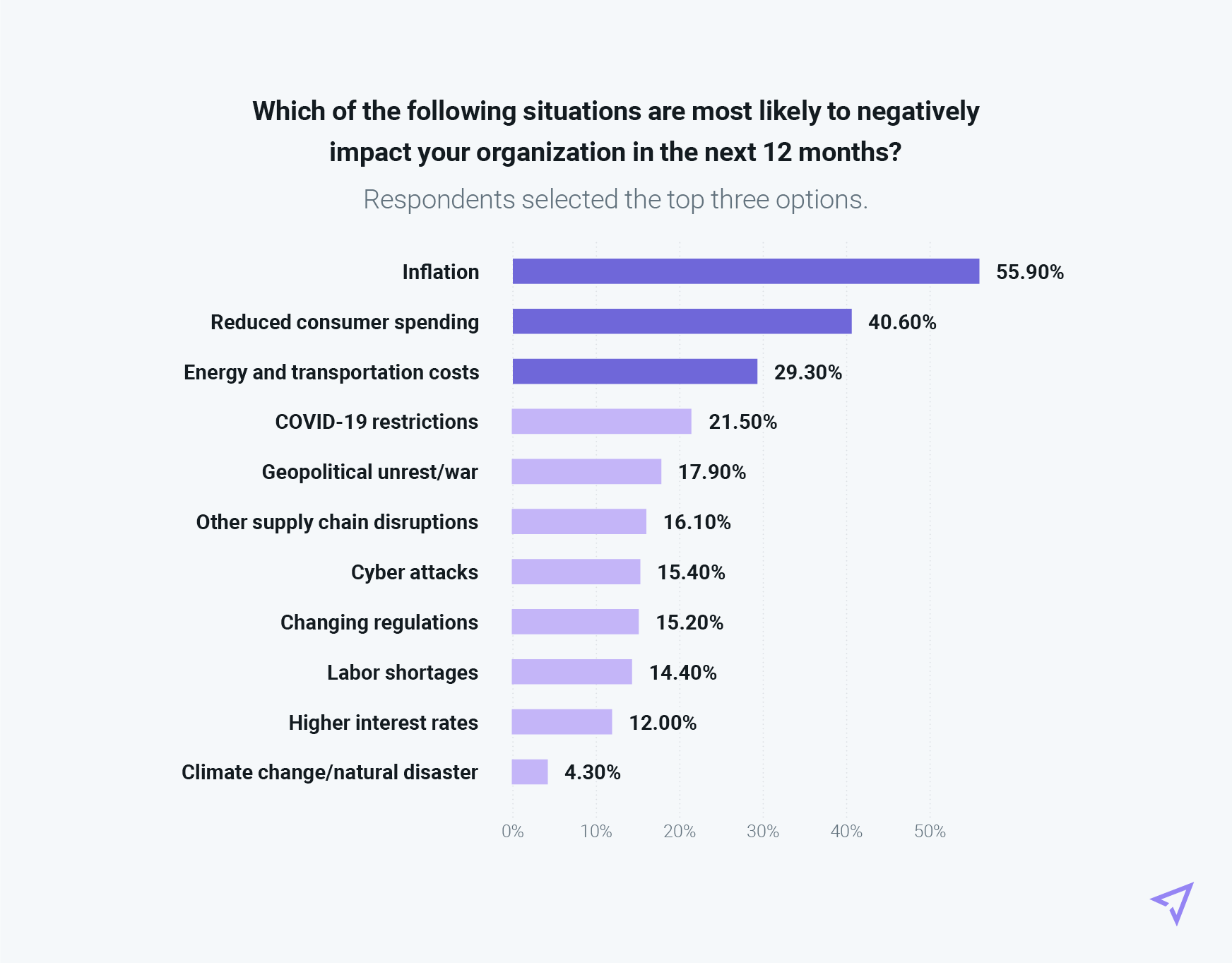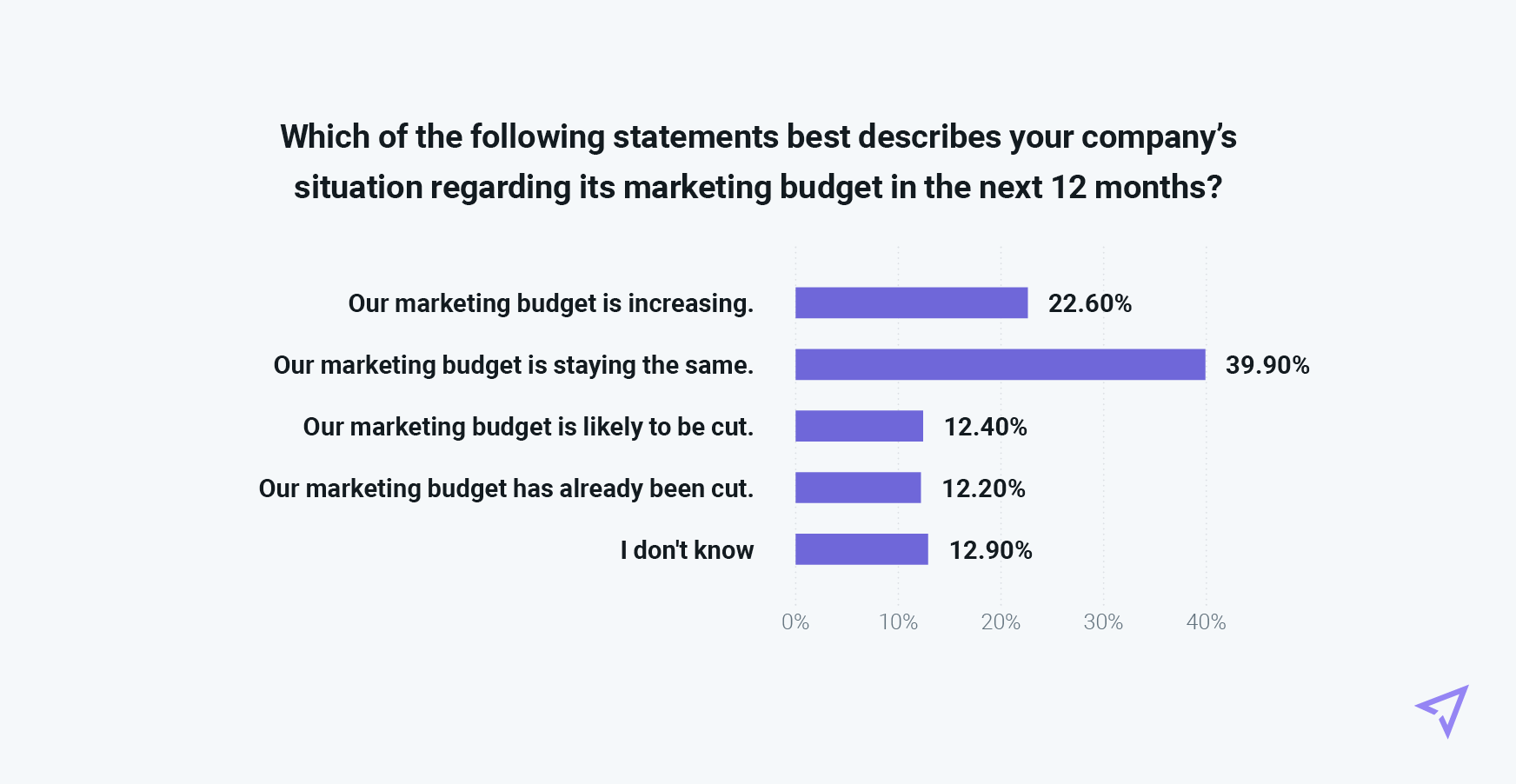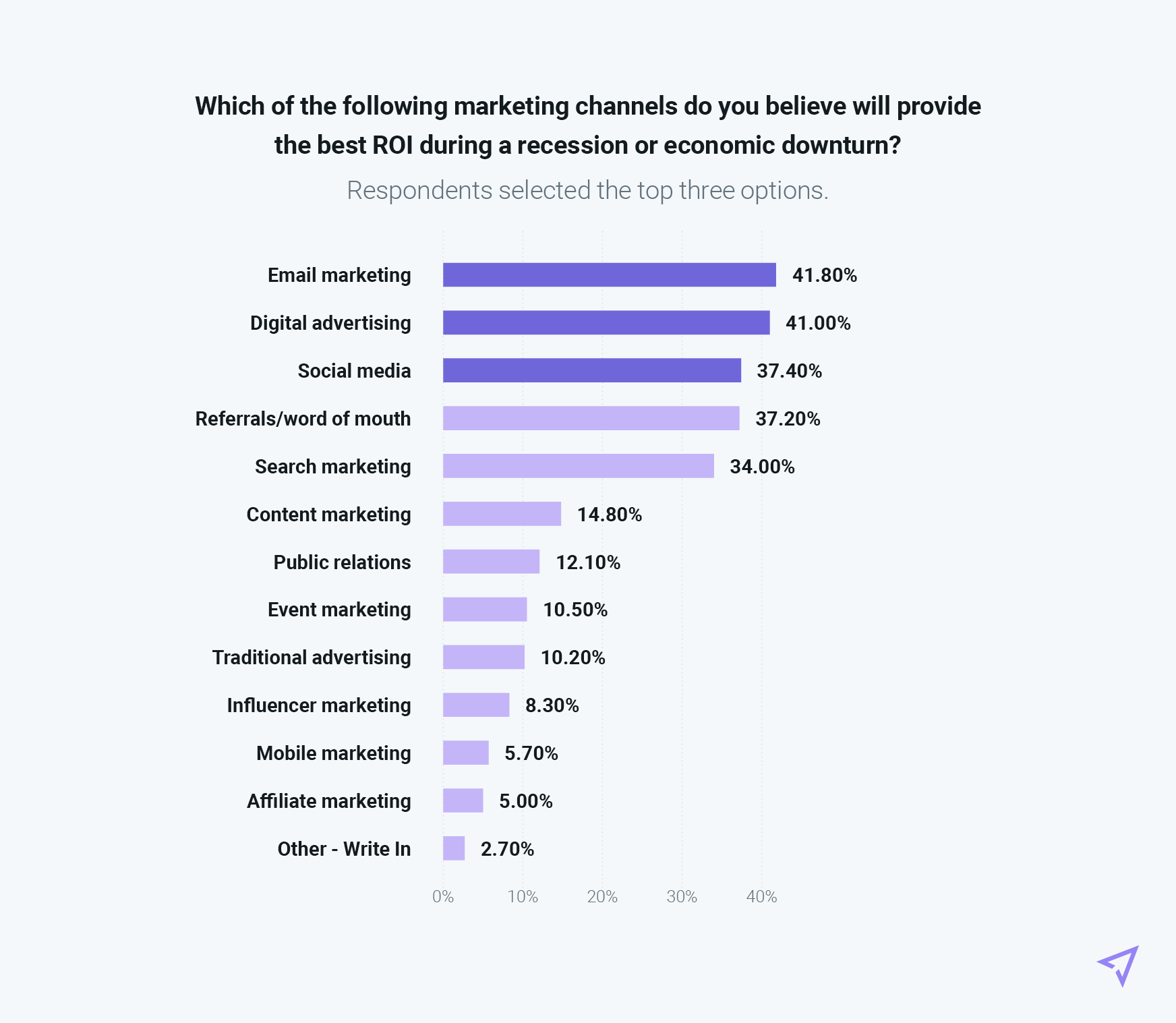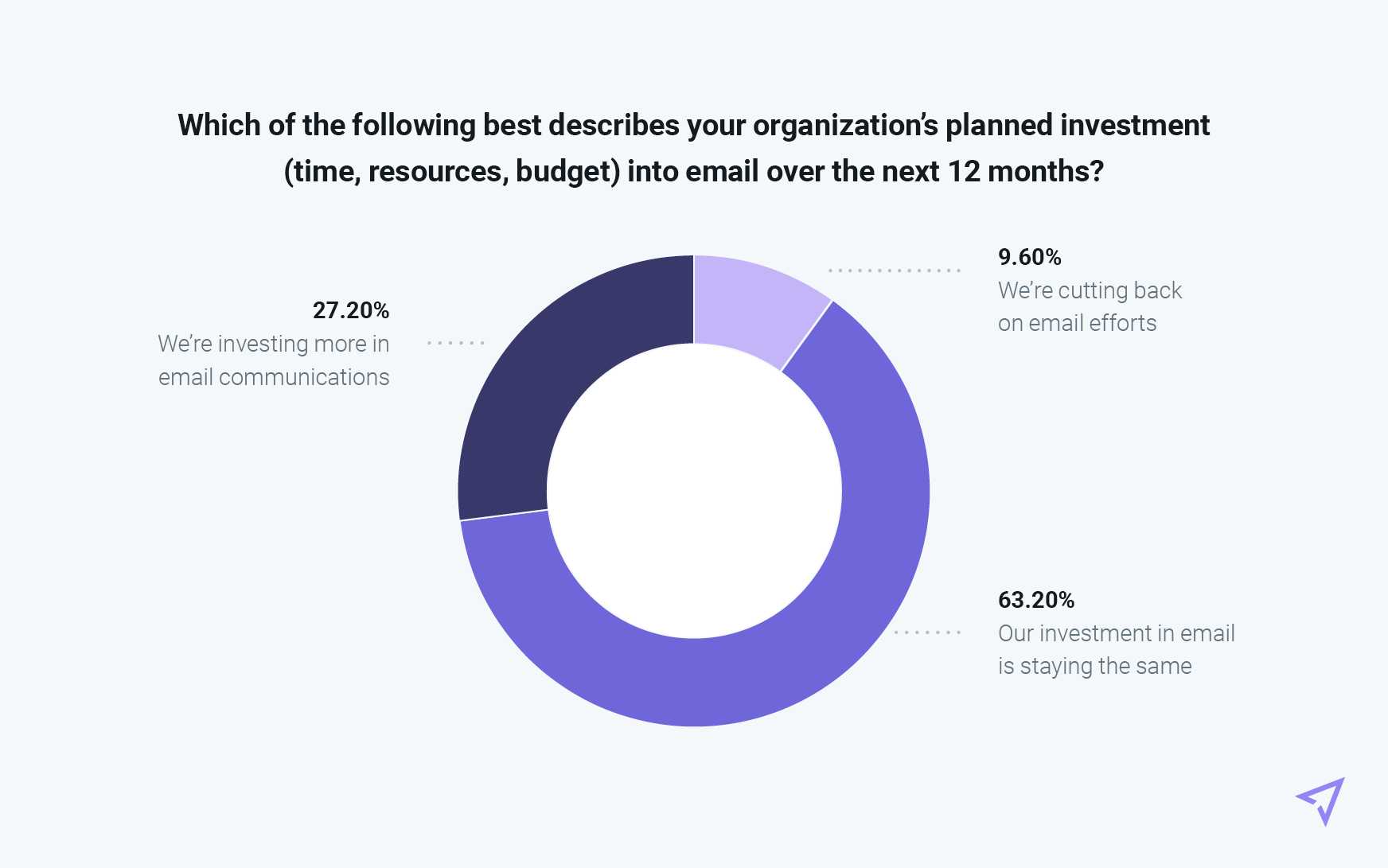Marketing
Marketing in a recession: Insights from “Email in an evolving economy”
See results from a survey of marketers and email senders around the world. Find out what they think about how to handle a possible recession.

PUBLISHED ON
If uncertainty makes you feel uncomfortable, we’re willing to bet you might be a little worried about what’s going to happen to the global economy in 2023. We get it...
Whether you’re concerned about working with a tighter budget, keeping a small business afloat, or keeping your job, what happens to the economy can directly affect your life and work.
To help us understand how marketers feel about the future, and to help you make informed decisions, we conducted a survey of email senders to get their insights and opinions on everything from marketing budgets to digital communication strategies.
We’ve published the results in our new report, “Email in an evolving economy”, which features responses from more than 1,300 Mailjet and Sinch Mailgun customers from all over the world. Let’s take a look at some of the major findings from the survey.
Table of content
Table of content
Top economic concerns
If you listen to any of the news about the economy, this result should come as no surprise. There’s one word that’s on our minds no matter where you live or what you do for a living: Inflation.
When we asked email senders to choose three economic factors that could negatively affect their organizations in the coming year, concerns over rising prices due to inflation topped the list. Nearly 56% of respondents chose Inflation as a potential problem in 2023.

The other two options in the top three – Reduced consumer spending (40.6%) and Energy and transportation costs (29.3%) – are connected to inflation. Consumers may spend less as prices continue to climb. Plus, energy prices are one of the biggest contributors to inflation. That's not just because it costs more to heat homes and fuel vehicles. If it costs more to transport physical products, the price of those products will also rise. It’s a vicious cycle.
Central banks around the world are trying to curb inflation by raising interest rates, which some economists believe could cause a recession. It’s a little bit ironic, don’t you think?
Economic factors impact different parts of the world in different ways. In the full report, we break out responses from those in the United States, United Kingdom, Germany, France, and Spain to give you some regional details and an international perspective.
Marketing budgets in 2023
As practically everything gets more expensive, there are likely to be cutbacks and cost-saving measures in organizations large and small. But will marketing budgets get reduced in 2023?
We asked participants to let us know and found that most of them plan to either increase the marketing budget or keep it unchanged in the coming year. Nearly 23% say they expect to spend more on marketing in 2023.

While marketing departments are often one of the first places to see cuts, brands that stay the course stay top of mind with customers and prospects. History has shown us how brands that increase marketing during a recession are more likely to experience success when the economic picture improves.
Nearly a quarter of respondents expect marketing budget cuts or have already experienced them. But more than 60% expect their marketing budgets to expand or stay the same in 2023.
It’s certainly possible that sentiments around marketing budgets and the economy have changed since late summer. If the evolving economic situation continues heading in a downward direction, so could the money and resources available to marketers.
Nearly 13% who said they don’t know what’s going to happen to their marketing budgets in a recession are being very honest. None of us really knows what to expect, which is why marketers may want to decide where cuts could be made now.
Marketing and communication cuts
When presented with a list of 12 marketing and communication channels, respondents were clear about the areas in which spending and usage could be reduced. Traditional advertising (41.6%) was selected the most often.

Traditional advertising includes broadcast, print, and outdoor ads – all are typically non-digital marketing channels. However, at 26%, Digital advertising is seen as the second most-likely channel for cutbacks. That seems somewhat surprising. As you’ll see in the next section, digital ads are also viewed as a channel that delivers a high return on investment (ROI). However, digital ad spend often makes up a large portion of the marketing budget. So, as effective as they may be, spending cuts must come from somewhere.
Some analysts say a possible recession in 2023 is clouding the picture for digital ad spending. The Interactive Advertising Bureau (IAB) predicts year-over-year growth in ad spending will slow from 9% in 2022 to 5.9% in 2023.
Event marketing (22.8%) rounded out the top three channels that could see reductions in 2023. This could be because of the cost of travel and accommodation. Travel budgets are also one of the first things companies cut back on when the economy dips.
Only 13.1% of survey respondents believe it's likely that email marketing could be reduced if there are cuts to their marketing budgets in the next year.
Communication channel ROI
Underperforming channels will no doubt be the first to get cut from marketing budgets in 2023, but the channels and tactics that deliver results could be leaned on more heavily during a potential recession.
Our survey results show email in a tight race with digital ads for the channel respondents believe can deliver the best return during a recession. 41.8% of survey participants chose Email marketing as providing ROI, while an even 41% selected Digital advertising.

Email and digital ads seem to have totally different purposes and target audiences. You usually run digital ads to boost brand awareness and attract new business. Marketers are more likely to use email for customer communication and to nurture subscribers into becoming paying customers.
What these two channels have in common is the ability to target your marketing messages to key audiences.
With email marketing, you can target your messaging by segmenting your list into specific groups and using zero and first-party data to personalize emails for individual subscribers. With digital ads, social promotions, and paid search marketing, you can choose the intended audience based on factors such as demographics, job roles, interests, and more.
Our survey found email senders see Boosting brand awareness and Improving customer loyalty as the two greatest opportunities for successful marketing in a recession. Digital ad placement will support brand awareness and an email strategy based on the customer lifecycle will improve loyalty.
At nearly 43%, Boosting brand awareness topped potential opportunities for marketing in a recession. Improving customer loyalty came in second at almost 41%.
Email marketing in 2023
Of course, we couldn’t pass up a chance to ask email senders for some specific insights into how they feel about email marketing in a recession. First, it’s clear that most survey participants have no expectations for cutting email marketing efforts in the next 12 months.

Just over 27% said they plan to invest more time, resources, and budget into email during 2023, and another 63% told us their investment in email wouldn’t change. This goes to show how important email is to customer communication and marketing – even during a recession. Less than 10% of respondents expect to reduce email efforts.
Despite a potential recession, more than 90% of survey respondents plan to increase or maintain their investment in email next year.
So, it’s clear that email plays an indispensable role in communication and marketing. But what is it about email that works best? We asked survey participants to pick the top three email practices that contribute to their success. A trio of unique tactics received the most votes from respondents.

Among all survey respondents, Personalization topped the list with just over 39%. Respondents chose List building more than 37% of the time and List cleaning barely beat out Newsletters/content distribution with a bit more than 29%.
Studies show email personalization can significantly improve opens, clicks, and conversion rates. Personalized emails are also an excellent way to improve customer loyalty because they make communication between brands and subscribers feel friendlier and more familiar.
When we analyzed responses from participants who work in marketing, it was List building that came out on top. Close to 46% of marketers see subscriber growth as crucial to successful marketing in a recession. Marketers chose Personalization just over 36% of the time.
Planning for a global recession
We’ve only just begun to explore the results of “Email in an evolving economy”. You’ll find much more when you get your own free copy of the full report. That includes:
How some economic factors are affecting certain countries more than others.
Why different industries and job roles have varying opinions on what works best.
What the most successful marketers are prioritizing in their 2023 strategies.
Opportunities for effective digital communication during a recession.
How to take full advantage of email marketing’s powerful benefits.
Navigating a tumultuous global economy won’t be easy, but email is a tool many marketers will rely on to help them stay in touch with customers, stay top of mind with prospects, and stay in business despite the challenges. Use this report to aid your decision-making and enhance your strategy in the coming months.








